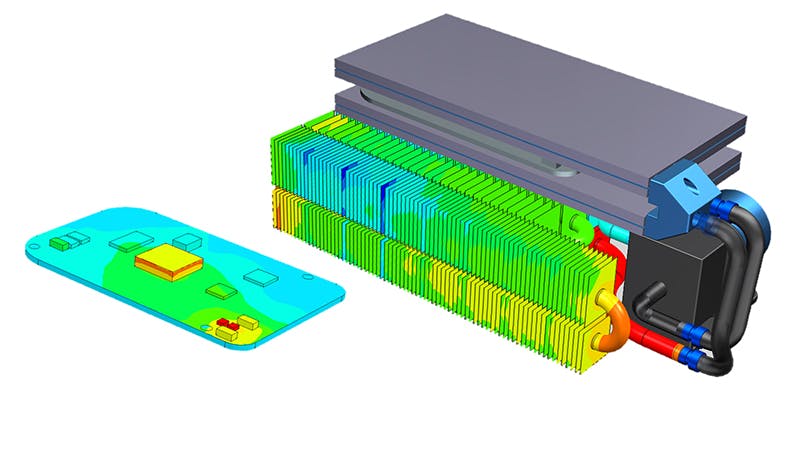Does your electronics thermal management design provide the adequate cooling capacity to ensure critical component junction temperatures are within limits to avoid failure or impact performance? Is your design energy efficient? How can you achieve the best design within the available time?
Attend this presentation to discover how to overcome MCAD and ECAD related design barriers to shorten development using fully CAD-embedded CFD software, Simcenter FLOEFD. By eliminating transfer between MCAD and CFD thermal analysis tools, reducing analysis process overheads, and streamlining workflows for collaboration with EDA design groups - results can be used earlier for better decision making.
Join this presentation to discover how to overcome MCAD and ECAD related design barriers to shorten development using Simcenter FLOEFD CAD-embedded CFD software.
Electronics thermal design using a CAD Embedded CFD workflow
A thermal management design study will be demonstrated for an electronics product that has both a pumped liquid cooling subsystem for cooling high heat dissipation components and convection air cooling of a PCB control board in a sealed enclosure. There is design consideration of heatsinks, fans cold plates and heat exchangers. In this example, you will learn how to apply CAD-embedded CFD with specific electronics cooling capabilities to evaluate and optimize even the most geometrically complex designs.
The study will be performed in NX environment with Simcenter FLOEFD for NX. This will illustrate the approach common to other CAD environment variants for Solid Edge, CATIA or Creo.
What you will learn:
- Electronics cooling CFD in the CAD environment: geometry handling, automatic meshing, solving to results post-processing
- Appropriate PCB thermal modeling levels – compact through to detailed full copper trace modeling for joule heating analysis
- How to go from EDA imported PCB data to CFD thermal model in minutes
- Chip package modeling fidelity from simple, 2-R, through to 3D CAD-based detailed package thermal model creation
- Optimization and design exploration: how to intelligently explore the design space efficiently and select the best option quickly
Further topics will be briefly discussed on package thermal model calibration against measurement data, and supporting both electrothermal modeling and system modeling with reduced-order models.
Register now for our next live webinar on December 2:
Enhancing electronics thermo-mechanical analysis workflow
